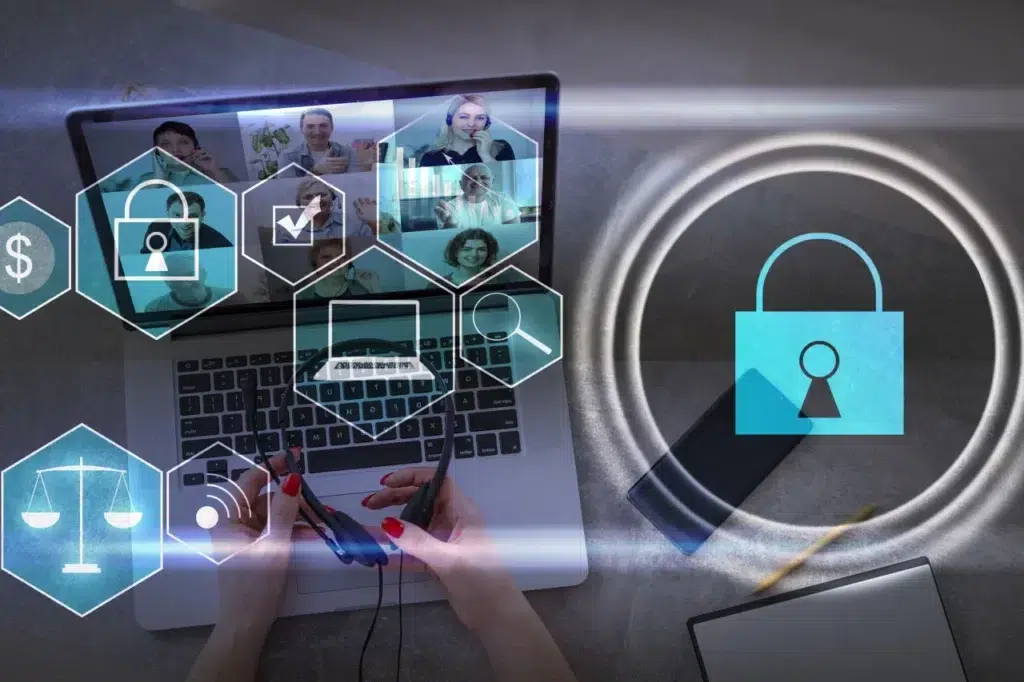The Ultimate Guide to Cyber Threat Management in 2025

In today’s interconnected digital landscape, cyber threats continue to evolve rapidly, affecting individuals, businesses, and even governments. The need for robust cyber threat management has never been more critical, as cyber attacks grow increasingly sophisticated and damaging. Cyber threat management encompasses various strategies, tools, and cyber security best practices aimed at identifying, preventing, and mitigating cyber threats before they can cause significant harm. For a software development company, implementing effective cyber threat management strategies is essential for strengthening defenses, securing sensitive information, and protecting digital assets. This article explores the essentials of cyber threat management, providing insights into how companies can build resilient systems to safeguard their operations.
What is Cyber Threat Management?
Cyber threat management involves a series of proactive and reactive measures to detect, assess, respond to, and mitigate potential cyber threats. It’s a continuous process that requires organizations, including software development companies, to stay vigilant against potential attacks, protect sensitive data, and adapt to emerging risks. According to a report from Accenture, cybercrime costs businesses more than $1 trillion globally each year (Accenture, 2023). Effective cyber threat management integrates security measures across all levels of a company’s operations, making it a holistic approach to information security. As cyber threats become more sophisticated, businesses must implement comprehensive strategies to safeguard their systems, with 60% of businesses reporting increased spending on cybersecurity in 2023 to address rising risks (PwC, 2023).
Why Cyber Threat Management is Important
With increasing amounts of sensitive data stored online, cyber threat management is vital for protecting valuable information. From financial records and personal customer data to proprietary business information, organizations have a lot to lose in a cyber attack. A data breach can result in legal issues, reputational damage, financial loss, and even operational disruptions. As a result, companies must invest in cyber threat management to ensure business continuity and maintain customer trust.
Get in touch with Savvycom for a free consultation. We’ll help you decide on next steps, explain how the development process is organized, and provide you with a free project estimate.
Key Components of Cyber Threat Management
An effective cyber threat management strategy involves multiple components, each designed to reinforce an organization’s cybersecurity strategy. Here are the key components:
1. Threat Intelligence Gathering
Threat intelligence is the foundation of any cyber threat management strategy. It involves gathering data from various sources, including internal systems, third-party security providers, and public threat feeds, to understand current and emerging threats. By leveraging threat intelligence, organizations can stay informed about potential vulnerabilities and prepare accordingly.
2. Threat Detection
Threat detection is the process of identifying malicious activity within a network or system. Advanced detection tools, such as Intrusion Detection Systems (IDS) and Security Information and Event Management (SIEM) solutions, can help organizations identify suspicious patterns, detect vulnerabilities, and respond to potential threats in real time, reinforcing cyber threat management efforts.
3. Incident Response
Effective incident response is essential for minimizing the damage caused by cyber attacks. This involves a predefined plan that outlines how to handle security incidents. A robust incident response plan is a cornerstone of cyber threat management, including steps for isolating affected systems, containing the threat, eliminating the attacker’s presence, and recovering compromised data.
4. Risk Assessment and Vulnerability Management
A critical aspect of cyber threat management is regular risk assessment and vulnerability management. Conducting risk assessments helps organizations identify potential threats and prioritize resources based on the level of risk. Vulnerability management focuses on identifying and remediating security weaknesses, such as outdated software, misconfigurations, or exposed endpoints.
5. Employee Training and Awareness
Human error remains one of the leading causes of security breaches. Employee training and awareness programs are crucial to cyber threat management because they help reduce the risk of phishing attacks, malware infections, and social engineering tactics. By educating employees about cybersecurity best practices, companies can strengthen their defenses against potential threats.
6. Continuous Monitoring
Continuous monitoring of network traffic, applications, and devices helps organizations detect and respond to cyber threats quickly. Security teams can track anomalies and suspicious activities in real time, making cyber threat management more efficient and effective with tools like Security Operations Centers (SOCs) and automated threat detection systems.
7. MSP Cyber Security Solutions
For many organizations, partnering with a Managed Service Provider (MSP cyber security) can significantly enhance their cyber threat management capabilities. MSPs offer specialized expertise, resources, and technologies that may not be feasible for companies to maintain in-house.
Common Cyber Threats That Need Management
Understanding the types of cyber threats that organizations face is essential for effective cyber threat management. Here are some common threats:
- Malware Attacks: Malware, including viruses, ransomware, and spyware, can infiltrate systems, disrupt operations, and compromise sensitive data.
- Phishing Attacks: Cybercriminals use deceptive emails and messages to trick users into revealing personal information or downloading malware.
- Denial-of-Service (DoS) Attacks: Attackers flood networks or systems with excessive traffic, disrupting service availability.
- Insider Threats: Employees or third-party contractors with access to sensitive data may pose a threat, either through negligence or malicious intent.
- Zero-Day Exploits: Attackers exploit previously unknown vulnerabilities in software before they are patched by developers.
- Advanced Persistent Threats (APTs): Highly targeted and prolonged attacks that aim to steal information or sabotage systems without being detected.
Tools and Technologies in Cyber Threat Management
Numerous tools and technologies play a pivotal role in cyber threat management. Here are some of the most commonly used ones:
- Firewall and IDS/IPS: Firewalls and Intrusion Detection and Prevention Systems act as the first line of defense against unauthorized access.
- SIEM Solutions: Security Information and Event Management tools provide a centralized view of security alerts and logs, enabling better threat detection and response.
- Endpoint Protection Platforms (EPP): EPP tools safeguard individual devices by detecting and blocking malicious activities at the endpoint level.
- Threat Intelligence Platforms (TIPs): TIPs aggregate threat data from various sources, helping organizations anticipate and respond to emerging threats.
- Encryption Tools: Data encryption protects sensitive data, ensuring that even if data is intercepted, it remains inaccessible to unauthorized parties.
The Role of Artificial Intelligence in Cyber Threat Management
AI in cyber security is transforming the landscape of cyber threat management, enabling organizations to identify and respond to threats faster than ever. Machine learning algorithms can analyze vast amounts of data, identify patterns, and detect anomalies, which is essential in uncovering hidden threats. Additionally, AI-powered tools can automate repetitive tasks, freeing up security professionals to focus on more complex issues. As cyber threats become more advanced, the use of AI in cyber threat management is expected to increase.
Best Practices for Effective Cyber Threat Management
To implement a successful cyber threat management strategy, organizations should consider the following best practices:
- Implement a Multi-Layered Security Approach: Using multiple security layers, such as firewalls, encryption, and endpoint protection, reduces the risk of breaches.
- Regularly Update Software and Systems: Outdated systems and software are prone to vulnerabilities. Regular updates and patches can prevent exploitation.
- Conduct Regular Security Audits: Security audits help identify weaknesses in current security measures and provide insights into areas needing improvement.
- Develop a Robust Incident Response Plan: An effective response plan can mitigate the impact of an attack and accelerate recovery.
- Engage in Continuous Threat Intelligence Gathering: Constantly monitor the threat landscape and stay informed of new attack vectors and techniques.
Future of Cyber Threat Management
With emerging technologies like the Internet of Things (IoT), 5G networks, and cloud computing, the cybersecurity future will need to adapt to a rapidly expanding attack surface. Companies are likely to invest more in automated threat detection, AI-driven security tools, and decentralized network security frameworks. Implementing zero trust cybersecurity principles can further enhance security by ensuring that no one, whether inside or outside the network, is trusted by default. As cyber threats evolve, organizations will need to prioritize agility, scalability, and proactive measures in their security strategies to stay ahead of attackers.
Conclusion
Cyber threat management is no longer optional in today’s digital age — it is a necessity. With the increasing complexity of cyber attacks, businesses must adopt a comprehensive approach that combines threat intelligence, detection, response, and continuous improvement. Partnering with a trusted cybersecurity service provider can help streamline this process. Savvycom, a leading software development company, offers tailored cybersecurity solutions that help businesses protect their digital assets, safeguard customer data, and maintain operational resilience. By partnering with Savvycom, organizations can implement advanced cyber threat management strategies, including zero trust implementation, to secure their future in an unpredictable digital world.
For more information on Savvycom’s cybersecurity services and how we can help fortify your defenses, please visit our homepage.
Tech Consulting, End-to-End Product Development, Cloud & DevOps Service! Since 2009, Savvycom has been harnessing digital technologies for the benefit of businesses, mid and large enterprises, and startups across the variety of industries. We can help you to build high-quality software solutions and products as well as deliver a wide range of related professional services.
Savvycom is right where you need. Contact us now for further consultation:
- Phone: +84 24 3202 9222
- Hotline: +1 408 663 8600 (US); +612 8006 1349 (AUS); +84 32 675 2886 (VN)
- Email: [email protected]


